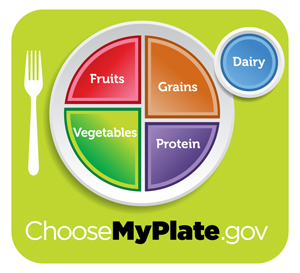The dairy industry is making news again. This time it’s courtesy of former presidential advisor Karl Rove. He just made an address about the upcoming presidential elections…and chose to do it from the International Dairy Show.
He told the 3,400 dairy industry insiders to “stay in the game” and find “any capacity” to shape America’s future.
Merging politics and big money is working well for the dairy industry. Rove’s appearance brought in 30 percent more buyers over last year. And that was exactly the intention. To promote dairy…and find even more ways to market and sell it.
“Attracting the right buyers continues to be a top priority for us,” says International Dairy Foods Association (IDFA) CEO Connie Tipton.
So you can look forward to even more aggressive campaigns asking if you’ve got milk…and telling you it does your body good. And we’ve been told for generations why this is so…because it builds strong bones and fights osteoporosis.
But is this actually true? Experts from Harvard say it isn’t. In fact…their studies show dairy doesn’t strengthen your bones at all. And some experts are now saying it actually increases your risk of fracture.
We’ll tell you more about what these experts have to say…and what these studies show…as we dig into the milk myth…and find out whether it’s built on fact or fiction.
Manufacturing the Milk Myth
There have been some minor changes to the new USDA recommendations. For one thing…it’s had a glossy new makeover. The food pyramid of the last 20 years is gone. Instead…they’ve opted for a colorful, simplified food-plate version of the 1980s food wheel.
 |
| 2011 USDA Dietary Recommendations |
| Image Source: http://www.choosemyplate.gov/ |
But one thing that hasn’t changed much…is their advice on dairy. The old food pyramid recommended you needed three servings of dairy a day. The new “plate” says you need three cups of dairy a day.
That’s still a lot of dairy. And the guide gives some advice on how to get all that dairy onto your plate each day.
You can mix and match milk with cheese and yogurt. But if you prefer one food over the other two you’d be looking at:
- Three cups of milk…or a pint-and-a-half of container mil
or… - Six ounces of processed cheese…or nine slices of American cheese
That’s a lot of cheese and milk each day. Why does the government say we need so much?
It tells us that dairy:
- Strengthens bones
- Increases muscle
- Fights osteoporosis
They say it can do all this because dairy is rich in calcium. And some experts say calcium builds strong bones and teeth.
But there are many credible experts that say this simply isn’t true. They say the calcium theory is flawed…and that dairy does more harm than good. And they’ve got the scientific research to prove it.
Digging into Dairy
“Calcium deficiency is a commercial ploy to sell you more calcium pills and dairy products,” says Dr. John McDougall. (iv)Dr. McDougall operates a health and medical center in Santa Rosa, California.
And he may have a point. The National Dairy Board has spent over $1.1 billion to promote it. And it’s paid big dividends…
We wrote about the big business behind dairy a few months ago. You can read that article here.
But here are few highlights:
- Milk is the second-largest agricultural commodity in the US.
- Milk has brought in $27 billion in cash since in 2005.
- Americans drink more than six billion gallons of milk per year…and another 10 billion gallons are used to produce cheese.
So milk makes big money for dairy farmers and the agricultural industry…but it also makes your bones strong too, right?
Apparently not, according to Dr. McDougall.
“There’s no truth to it,” he says. “American women are among the biggest consumers of calcium in the world…and they still have the highest levels of osteoporosis.”
That’s a good logical argument…but is there any scientific evidence to back this up?
Actually…there is. And it comes from the chairman of nutrition research at Harvard School of Public Health…Dr. Walter Willet.
Dr. Willet has put this theory to the scientific test…and has led two of the biggest studies on it.
His first study looked at 78,000 women over 12 years.
“Milk is a primary source of calcium,” he says, “and therefore might be expected to decrease bone loss and fracture risk. Yet research has not supported this assumption.”
He followed his subject’s progress across the years…and found that dairy and calcium didn’t reduce the risk of fracture.
In his follow-up study, he again found that drinking milk offered a “non-significant reduction in fracture risk.” In this study he noted that even with “higher daily intakes of milk, there was still no evidence of a protective effect.”
And his research is not alone.
The American Journal of Clinical Nutrition reviewed relevant research on how dairy affects bone health. The researchers reviewed 57 published studies on the subject.
After reviewing these studies they found:
Almost 60 percent of studies showed no significant benefit from dairy…and 14 percent showed negatives effects on bone health.
“Most of these studies were funded by the dairy industry,” says Dr. McDougall. “Yet with all their influence on the research, they could not make a solid case for dairy benefiting bones.”
And there’s even more research supporting this facts.
One study published in the British Medical Journal investigated whether calcium improved bone strength in children.
The study was led by Dr. Tania Winzenberg for the Menzies Research Institute of Tasmania. She’s the vice-chair of research for the Royal Australian College of General Practitioners. She specializes in osteoporosis and has published over 50 papers on the subject.
Dr. Winzenberg used a series of randomized placebo-controlled trials and two independent researchers to review the data. The trails ran for about nine months.
She took healthy children and gave them a calcium supplement – or placebo – for at least three months. Then she followed up for another six months looking at their outcomes.
“Calcium supplementation had no effect on bone mineral density,” she says.
She also had her research team look at 19 studies involving almost 3,000 people. The researchers measured the incidence of fracture in children and adults who had calcium supplements during childhood. After an exhaustive review they found…
“Calcium supplementation is unlikely to reduce the risk of fracture, either in childhood or later life.”
And the evidence doesn’t even end there…in fact…it gets worse.
Dr. Amy Jou Lanou of the University of North Carolina, Asheville, reviewed the study. She’s a Cornell University graduate and specializes in bone health.
Dr. Lanou has taken these findings one step further.
She looked at countries with the highest dairy consumption…and found that those people also had the highest incidence of bone fractures.
 |
| Chart showing countries with the highest intake of calcium have the highest incidence of fractures. |
| Image Source: Dr. McDougall |
“Conventional wisdom and adverts for dairy products link calcium to better bone health and prevention of osteoporosis,” she says. “What if we have it wrong? Populations that consume the most dairy products have the highest rates of osteoporosis and hip fracture in later life.”
She says the conclusion is obvious. Dairy and calcium are actually bad for your bones.
And they may pose even greater risks…
“Studies suggest that cow’s milk increases the risk of cancer,” she says.
We’ve written about this in the past. And about the links to heart disease.
“It’s time to revise our recommendations about the role of calcium and dairy,” says Dr. Lanou.
Finding Other Ways to Fight Fractures
“Public health would be better served by researching how other dietary factors affect bones,” says Dr. Lanou. “Promising areas include vitamin D.”
And Dr. Willet’s study backs this up. It shows that Vitamin D was more effective than calcium in preventing fractures.
“Vitamin D is associated with a lower risk of osteoporotic hip fractures,” he says. “Neither milk nor a high-calcium diet appears to reduce risk.”
In fact, emerging research also shows that vitamin D helps your body to better absorb calcium.
Dr. Willet says fish is a good source of vitamin D. And there are few better than wild-caught fish like Alaska salmon.
But there are some other ways you can get it. One way is getting out regularly into the sun. Or…you also get it in supplement form. If you opt for this…doctors recommend 2,000 IU each day.
Emerging research shows that there’s another mineral that may be able to strengthen your bones and combat osteoporosis…without bad side effects.
Join us on Friday when we’ll tell you what it is…what the experts are saying about it…and the best ways to get it.
Wishing you good health,

Ian Robinson
Editorial Director, NHD “Health Watch”
